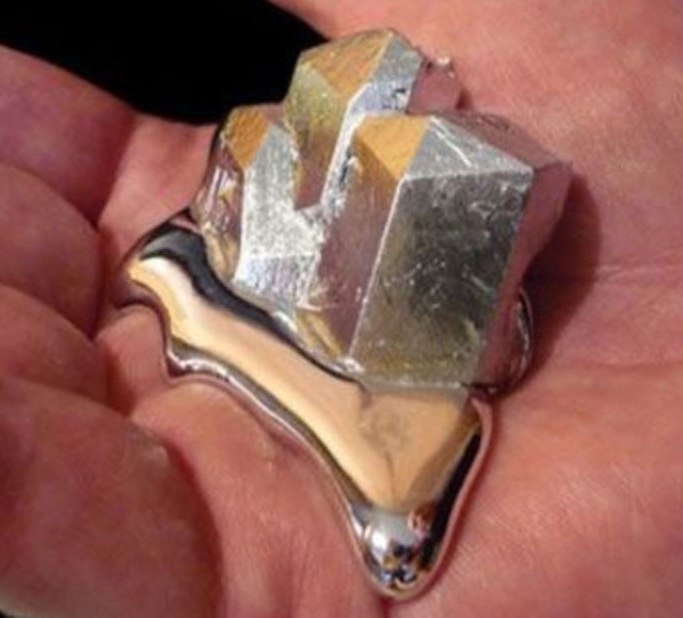The atomic structure of boron, element number 5 in the periodic table, displays a full inner shell of two electrons, with three electrons in the outermost shell, giving the atom three valence electrons available for bonding. In this respect, it resembles aluminum, the next element in the boron group; however, unlike aluminum, it cannot donate electrons to other atoms to form an ionic bond featuring a B3+ion, as the electrons are too tightly bound to the nucleus. Boron generally does not accept electrons to form a negative ion, so it does not normally form ionic compounds — the chemistry of boron is essentially covalent. The electron configuration and consequent bonding behavior also determines the crystalline structure of boron in its various elemental forms.
Boron: isolation. Isolation: it is not normally necessary to make boron in the laboratory and it would normally be purchased as it is available commercially.The most common sources of boron are tourmaline, borax Na 2 B 4 O 5 (OH) 4.8H 2 O, and kernite Na 2 B 4 O 5 (OH) 4.2H 2 O. It is difficult to obtain pure. It can be made through the magnesium reduction of the oxide, B 2 O 3. Answers for BORON'S ATOMIC NUMBER crossword clue. Search for crossword clues found in the NY Times, Daily Celebrity, Daily Mirror, Telegraph and major publications.
Boron compounds can often be described as “electron deficient,” in that there are fewer electrons involved in bonding than are required for normal covalent bonds. In a single covalent bond, two electrons are shared between atoms and in most molecules, the elements follow the octet rule. The structures of boron compounds such as boron trifluoride (BF3) and boron trichloride (BCl3), however, show that the element has only six, and not eight, electrons in its valence shell, making them exceptions to the octet rule.
Unusual bonding is also found in the structure of boron compounds known as boranes — investigation of these compounds has resulted in some revision of chemical bonding theories. Boranes are compounds of boron and hydrogen, the simplest one being the trihydride, BH3. Again, this compound contains a boron atom that is two electrons short of an octet. Diborane (B2H6) is unusual in that each of the two hydrogen atoms in the compound shares its electron with two boron atoms — this arrangement is known as a three-center two-electron bond. More than 50 different boranes are now known and the complexity of their chemistry rivals that of the hydrocarbons.
Elemental boron does not occur naturally on Earth and it is difficult to prepare in pure form, as the usual methods — for example, the reduction of the oxide — leave impurities that are difficult to remove. Although the element was first prepared in impure form in 1808, it was not until 1909 that it was produced in sufficient purity for its crystalline structure to be investigated. The basic unit for the crystalline structure of boron is a B12 icosahedron, with — at each of the 12 vertices — a boron atom bonded to five other atoms. The interesting feature of this structure is that the boron atoms are forming half-bonds by sharing one electron instead of the usual two electrons in a covalent bond. This gives the boron atoms an effective valency of 6, with one extra bond available at each of the vertices to allow them to bond to adjacent units.
Icosahedra do not pack together tightly, and leave voids in the crystal structure that can be filled by atoms of boron or other elements. A number of useful boron-metal alloys and boron compounds featuring B12 icosahedra in combination with other elements have been produced. These materials are noted for their hardness and high melting points. One example is aluminum magnesium boride (BAM), with the chemical formula AlMgB14. This material has the distinction of having the lowest friction coefficient known — in other words, it is extremely slippery — and is used as a hardwearing, low friction coating for machine parts.
Atomic Number of Boron is 5.
Chemical symbol for Boron is B. Number of protons in Boron is 5. Atomic weight of Boron is 10.81 u or g/mol. Melting point of Boron is 2300 °C and its the boiling point is 2550 °C.
» Boiling Point» Melting Point» Abundant» State at STP» Discovery YearAbout Boron
Boron is an essential chemical element for plants and an important one for animals (but in small doses). The name of the chemical element has Arabic roots, and in its pure form boron is dark color powder. However, it does not exist free in nature, only as a part of chemical compounds, with borax being the most popular of those. Boric acid is extensively used in medicine as an antiseptic, and boric oxide is often used to increase the strength of glass. Boron is a metalloid, so it demonstrates properties of both metals and non-metals.
Use of Boron
Boron (B), is generally used in chemical compounds. And it is extensively used in fiberglass. Boron is very important for domestic and international glass industry.
Boron compounds are also preferred in metallurgy, in industrial processes, in polymers, in the wood protection too. Boron makes products to be more resistant to physical impacts in ceramics. About 13% of boron consumption in the world is used for the ceramic industry. Today boron is also important in the agricultural industry. It increases agricultural yields and plays an important role in improving sustainability in agriculture.
Because it is very effective, boron is also used in detergent industries and industrial cleaners. Boron insulation materials are water resistant, long lasting, affordable, dust and heat free. So they provide heat, noise and fire insulation in living spaces.
Compounds with Boron
- AlB12: Aluminum boride
- BF: Boron monofluoride
- BN: Boron nitride
- B4C: Boron carbide
- H3BO3: Boric acid
- BPO4: Boron phosphate
- BAs: Boron arsenide
- B2O: Boron monoxide
- B2O3: Boron trioxide
- B2S3: Boron sulfide

Properties of Boron Element
| Atomic Number (Z) | 5 |
|---|---|
| Atomic Symbol | B |
| Group | 13 |
| Period | 2 |
| Atomic Weight | 10.81 u |
| Density | 2.34 g/cm3 |
| Melting Point (K) | 2349 K |
| Melting Point (℃) | 2300 °C |
| Boiling Point (K) | 4200 K |
| Boiling Point (℃) | 2550 °C |
| Heat Capacity | 1.026 J/g · K |
| Abundance | 10 mg/kg |
| State at STP | Solid |
| Occurrence | Primordial |
| Description | Metalloid |
| Electronegativity (Pauling) χ | 2.04 |
| Ionization Energy (eV) | 8.29803 |
| Atomic Radius | 85pm |
| Covalent Radius | 82pm |
| Valence Electrons | 3 |
| Year of Discovery | 1808 |
| Discoverer | Davy and Gay-Lussac |
What is the Boiling Point of Boron?
Boron boiling point is 2550 °C. Boiling point of Boron in Kelvin is 4200 K.
What is the Melting Point of Boron?
Boron melting point is 2300 °C. Melting point of Boron in Kelvin is 2349 K.
How Abundant is Boron?
Abundant value of Boron is 10 mg/kg.
What is the State of Boron at Standard Temperature and Pressure (STP)?
Boron Atomic Number 5
State of Boron is Solid at standard temperature and pressure at 0℃ and one atmosphere pressure.
Number Of Neutrons In Boron
When was Boron Discovered?
Boron Atomic Number And Mass
Boron was discovered in 1808.
Boron Atomic Number 5
